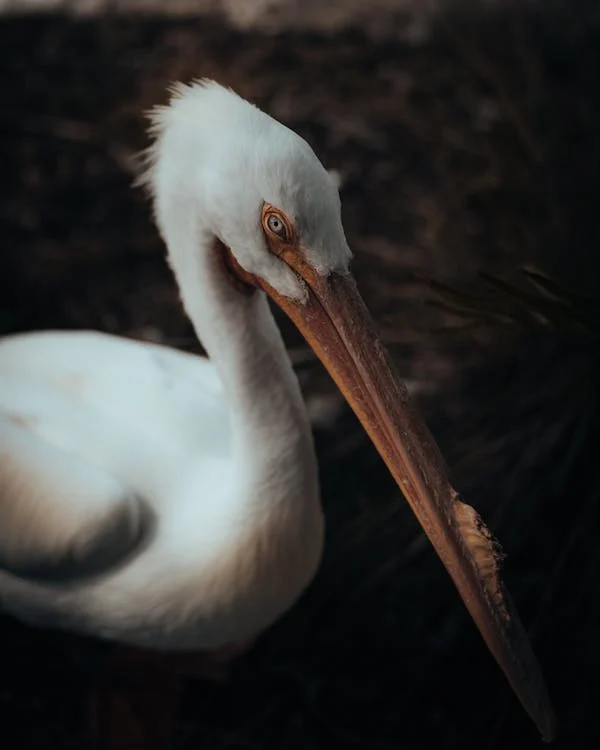Abdim’s Stork is such a fancy name to match the adorable features of this fairly colorful African bird. Also deemed a “harbinger of rain,” this bird is believed to be a symbol of good luck; therefore, some people encourage Abdim’s Storks to nest in their roofs.
There is so much to learn about this bird, and if you are in for some fascinating facts about it, read further below!
What is the Abdim’s Stork?
The Abdim’s Stork, or also known as White-bellied Stork and Ciconia abdimii, is a stork that belongs to the Ciconiidae family. This family of bird species is made of long-necked and long-legged birds with big and long bills. Its closest relatives are Oriental Storks, Black-necked Storks, Maguari Storks, Wood Storks, and Jabirus.
This bird species was named in honor of the Turkish Governor of Wadi Halfa in Sudan, Bey El-Arnaut Abdim.
Storks have a cosmopolitan distribution, being present in North America, tropical Asia, and Australia. The Abdim’s Stork can only be found in the African continent and small parts of Saudi Arabia. However, there have been records, which account that some Abdim’s Storks have been deliberately released in Florida, USA, although there is no present evidence that infers their growing population in the aforementioned state.
The International Union for Conservation of Nature (IUCN) Red List has classified this species as Least Concern due to its widespread distribution across the African continent.
Its seven levels of scientific classification are as follows:
Kingdom: Animalia
Phylum: Chordata
Class: Aves
Order: Ciconiiformes
Family: Ciconiidae
Genus: Ciconia
Species: C. abdimii
Physical characteristics of an Abdim’s Stork
The Abdim’s Stork is very much similar to the Black Stork, but the former is relatively smaller in size. An adult Abdim’s Stork has glossy black upperparts, with shades of purple and green, except the lower back, which is white in color.
As its other name (White-bellied Stork) suggests, the Abdim’s Stork underparts are pure white, except its throat, chin, and upper breast, which shares the same color with its upperparts. Its underwings have black flight feathers and white coverts.
Its head stands out due to its blue color with red lores and a small white spot on its forehead. Its straight, large bill is greyish-green in color. Its dark brown eyes are surrounded by white eye-rings. Its long legs are grey, while its knees are red.
Both male and female Abdim’s Stork share similar physical characteristics, but the latter is slightly larger than the male. It is considered the smallest species of stork, growing up to 75-81 cm and weighing for about 1-3 kg.
Distribution and habitat of Abdim’s Storks
Their population is rampant throughout eastern Africa. Some parts of central and western regions are also populated with this bird species. Likewise, numbers of Abdim’s Storks are also found in the southeast region of the African continent.
Abdim’s Storks take refuge in open grasslands, semi-desert areas, semi-arid zones, and other dry areas. A nearby water source is also essential.
The behavior of an Abdim’s Storks
This bird species is considered a trans-equatorial migrant, meaning this bird travels with other members of its species. Abdim’s Storks form a huge flock that consists of up to 10,000 birds.
They roost on trees and cliffs and rests during day time near pools and marshes.
The breeding season takes place early in the rainy season. During the breeding season, a male Abdim’s Stork will fluff out its neck to expose its glossy purple feathers to a female Abdim’s Stork. This species breeds in colonies, together with thousands of birds in trees, cliffs, and sometimes, on house roofs. A female Abdim’s Stork will usually lay two or three eggs. Both male and female birds will take good care of the eggs until they hatch. The incubation period usually lasts for one month.
Since this bird has long, broad wings, it can soar and fly quickly without any struggle. It flies with its neck and head forwards, while its legs are positioned backward, just a little beyond the tip of its tail.
Abdim’s Stork’s diet and hunting practices
The Abdim’s Stork feeds on large insects like grasshoppers and caterpillars, although it also eats small amphibians, mice, crabs, reptiles, and even eggs. Adbim’s Storks usually hunt for food in large flocks.
Sources:
https://www.beautyofbirds.com/abdimsstorks.html
http://www.oiseaux-birds.com/card-abdim-stork.html
https://en.wikipedia.org/wiki/Abdim%27s_stork
https://en.wikipedia.org/wiki/Stork
BOTSWANA BIRDS | SOUTH AFRICA BIRDS
NAMIBIA BIRDS | ZAMBIA BIRDS | ZIMBABWE BIRDS
